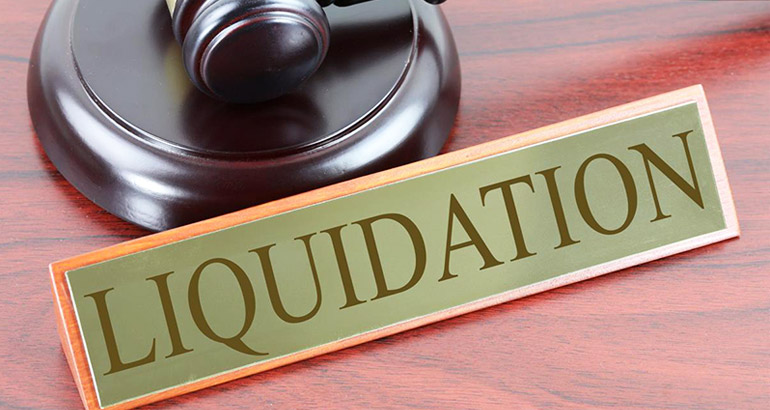The Buzz on Company Liquidation
The Buzz on Company Liquidation
Blog Article
The 5-Minute Rule for Company Liquidation
Table of ContentsEverything about Company LiquidationCompany Liquidation - TruthsThe Only Guide to Company LiquidationWhat Does Company Liquidation Do?What Does Company Liquidation Mean?
A liquidator is specifically selected to supervise the winding up of a company's affairs in order for it to be shut down normally when the business is declaring bankruptcy. The liquidator is an unbiased 3rd party who manages the sale of firm properties in order to pay off any type of arrearages.Their function includes, but is not limited to: Unbiased Overseer: A liquidator is charged with working as an objective 3rd party to manage the entire business liquidation process. Create Statement of Matters: Liquidators have to produce an extensive declaration of affairs record. This document is distributed to financial institutions, outlining the existing financial status of business at the time of its liquidation.
After the liquidation of a company, its presence is erased from Firms Home and it ceases to be a lawful entity. If directors browsed the procedure uncreative, there would be no penalties or personal responsibility for firm debts expected. Now, with a fresh start, supervisors can discover new service opportunities, though expert assessment is suggested.
Getting My Company Liquidation To Work
If more than 90% of all company shareholders agree, liquidation can take location on brief notification within 7 days, the minimal legal notification for creditors. Generally, the bigger the liquidation and the more possessions and capital the company has, the longer the process will certainly take.

We recognize that no 2 companies are the exact same, which is why we will certainly take the time to be familiar with your organization so we can advise the best program of activity for you. We only operate in your finest interests, so you can be completely positive in the solution we provide.
See This Report about Company Liquidation
In the UK, there is a set process to folding or restructuring a restricted company, whether it is solvent or financially troubled. This procedure is referred to as liquidation and can just be taken care of by a qualified bankruptcy expert (IP) in conformity with the Insolvency Act 1986. There are 4 major kinds of company liquidation process: Creditors' Voluntary Liquidation (CVL); Required liquidation; Administration; and Members' Volunteer Liquidation (MVL).

In these conditions, it is necessary that the business ceases trading; if the business remains to trade, the supervisors could be held directly liable and it might lead to the insolvency continue reading this specialist reporting wrongful trading, called misfeasance, which may cause legal action. The directors appoint an insolvency practitioner and once this has actually been agreed and verified, there is a conference with the shareholders.
Certainly, if there are no shareholders, this action of the process is not required (Company Liquidation). The IP takes control of the firm and starts the company liquidation process. The directors are no much longer entailed in what happens, including the sale of the business's properties. Nonetheless, if the directors want any of the possessions, they can alert the IP.
Company Liquidation for Beginners
The primary difference is that the company's financial institutions put on the court for a winding up order which forces the bankrupt business into a liquidation Discover More Here procedure. In many cases, lenders take this action as a last resource since they haven't obtained repayment through various other types of negotiation. The court assigns an insolvency practitioner, likewise referred to as a main receiver, to conduct the required business liquidation procedure.
This sort of firm liquidation is not voluntary and supervisors' conduct is reported to the UK's Secretary of State once the liquidation procedure has actually been completed. Consequently, any supervisor that stops working to cooperate with the IP or has actually been associated click site with supervisor transgression, or a deceitful act, might lead to significant consequences (Company Liquidation).
It is used as a way to secure the firm from any lawsuit by its creditors. The directors of the firm accept make routine settlements to resolve their financial obligations over a time period. The assigned administrator deals with the voluntary management procedure, and obtains the settlements which they then distribute to lenders according to the concurred amounts.
Getting My Company Liquidation To Work
This offers the business with time to establish a strategy going onward to save the business and stay clear of liquidation. However, now, supervisors hand control of the business over to the assigned manager. If a company is solvent yet the supervisors and shareholders want to shut business, a Members Voluntary Liquidation is the right option.
The firm liquidation process is handled by a liquidator appointed by the supervisors and investors of the business and they should authorize a statement that there are no creditors continuing to be. The liquidation procedure for an MVL resembles that of a CVL because possessions are realised yet the earnings are dispersed to the supervisors and the shareholders of the firm after the liquidator's fees have actually been paid.
Report this page